Application, Education & Awareness Products
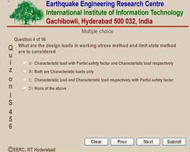
“Quiz on codes” is developed under EERC’s “Know Your Codes Theme” to integrate learning with fun. The product consists of multiple choice questions from the various IS codes. By clicking on the links provided for each of the IS code, the participants can attempt the quiz in the code of their choice. The correct answers for the quiz will be displayed after finishing the quiz. The results of the quiz will be sent to the email. Anybody can participate in the quiz.


The Indian Housing Encyclopedia (IHE) is a collection of resources related to housing construction practices in the seismically active areas of the India. The mission is to share experiences with different construction types and encourage the use of earthquake-resistant technologies in India.
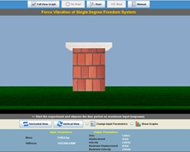

This electronic book describes about earthquake in a simple and lucid language and with lots of cartoons & animations. This e-book is aimed to create interest among children to know more about earthquakes.
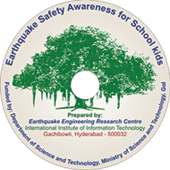
A CD containing flash animations on earthquake and tsunami. It has four modules. First module explains about basics of earthquake, Indian plate tectonics, convection etc. Second module explains about tsunami, its origin and related disasters. Third module explains about fire safety and fourth module explains about general building construction.
This book will help draw urgent attention of professional architects and engineers, especially countries like India, where large investments are being made on NSEs in building projects without verifying their earthquake safety. Hence, the target audience of the book includes practicing Architects and MEP design Engineers, in addition to teachers and students of architecture and engineering colleges.
All these models are made with wood and some simple mechanical and battery operated devices.

Information posters are prepared to explain information on various aspects before, during
and after any disaster. These posters help children to interact with each other more and
ask doubts if they have not understood any portion of the poster. Since these posters are
prepared in A0 size it is helping school authorities in organizing occassional drills for
the safety of children.
Earthquake Safety Awareness
Fire Safety Awareness
First Aid Awareness
Disaster Awareness & Preparedness
Guidelines for Earthquake Resistant Design

This is a flash animation tool which will explain how reinforcement detailing is to be done and what mistakes on site will cause damage even though design is proper.
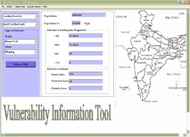
This product proposes an IT enabled approach towards locating Immediate Focus Region (IFRs). IFRs are regions that require immediate attention in areas that may vary from population densities to number of hospitals in a particular region. Although data required to mine out IFRs is available, it is scattered across different departments of the Government of India. Hence an appropriate model for a centralized database of all relevant data is of paramount priority in aiding decision making before, during and after a particular disaster. Prediction of an earthquake is still an ongoing research. The most intelligent approach in present scenario is to focus on the damage assessment as a function of property and life. The purpose of this study is to integrate different census data (pertaining to property damage risk and population) for the development of an effective disaster management system.

When people are looking at world map or map of their country, generally they tend to look at their country or their hometown. Here in this zonation map we used flash animation tool which will explain zones in India. Also the zonation map is plotted on political map so that people can know about the zone in which they live.
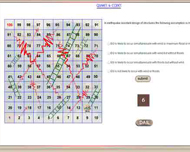
A game for undergraduate students for learning earthquake engineering with fun. In this game when a person rolls the dice their peg advances to the corresponding number. If the number has ladder then they have to answer the corresponding question to climb. If the square has snake then person has to answer inorder to save themselves. If the square has none then only information will be displayed.
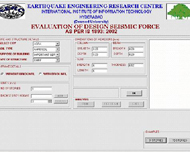
This is a software tool for performing the static and dynamic analysis of regular and simple multi-storied structures. This analysis procedure is based on IS 1893:2002 (Part I), Criteria for Earthquake Resistant Design of Structures. This tool is a windows based software program developed in Visual Basic. The tool provides a user-friendly GUI for the calculation of base shear and its distribution over the height of the structure, depending on the input parameters. Usual input parameters are structural dimensions, type of structure, soil type, purpose of structure and location. Though this tool is simple, can be used for verification of design within short time. This tool is aimed to help students, architects and engineers during design of earthquake resistant structures.
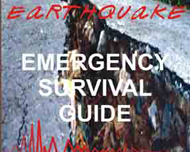
This is pocket guide prepared to give necessary information on earthquake disaster. It describes necessary steps to be taken before, during and after the earthquake disaster. On the reverse side of the sheet a zonation map is given and question like i) locate your home and ii) in which zone your home is located.
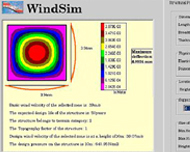
Procedure for finding out wind pressure at any given location in Indian subcontinent is outlined in IS-875 Part III 1987. This procedure is made convenient to the user by developing a tool named WindSim™. An efficient algorithm has been developed for finding out deflection, when the plate is subjected to uniform wind pressure. Finite difference method is used to solve the equation of plate in bending. It has been observed that the wind pressure varies with height. Hence, the algorithm is further modified to take care of the non-uniform wind loads and different support conditions. The deflection of the plate is graphically simulated by drawing contours on a VB GUI. The values of deflection obtained from the program can be compared with allowable deflection values, to check the safety of the structural component.
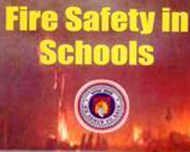
Schools are built to be safe from fire but serious fires do occur in these buildings also. If a fire does start, the students must have the ability to safety get out of the buildings. It is possible only if you formulate the fire drill and regularly practice it. That is why, schools must have fire drills.
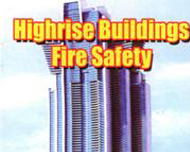
Recent fatal fires in highrise structures have prompted all to rethink fire safety. A key to fire safety for those who live and work in these special structures is to practice specific highrise fire safety and prevention behaviors.